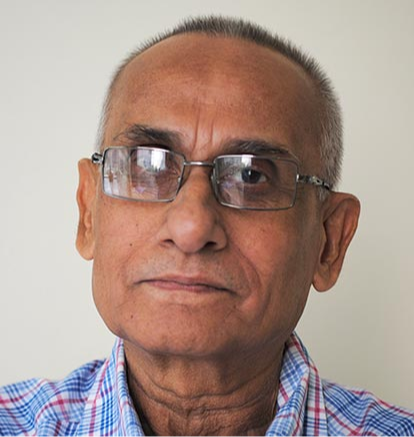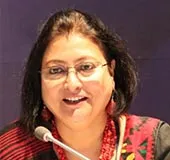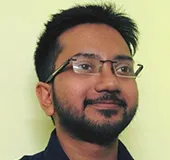-
CENTRES
Progammes & Centres
Location

Li Xin, managing editor of Caixin, a Chinese economics and finance magazine, in an article in World Policy, wrote in 2013: “Despite its size and proximity, India is a gigantic blind spot in China’s foreign policy. For most urban Chinese, the terms that spring most readily to mind regarding India are rape, Buddhism (despite the fact that fewer than 1 percent of Indians are Buddhists), and yoga, while rural Chinese would tell you that they have few associations, if any.”[i]
Li Xin’s findings are not surprising; is it any different on this side of the border? How much do people here in India, especially those living close to the country’s borders with China, know about China? What are their views on India–China relations? To find out, ORF-Kolkata conducted a limited opinion survey involving 246 respondents in the border regions of the states of Arunachal Pradesh, Assam and Sikkim.
The role and impact of public opinion on foreign policy, which has been largely regarded as an arena of “high politics,” remains controversial. It is necessary then to bring up this issue, however briefly, and refer to the evolution of ideas on it.
What do the common people think of India’s foreign policy? What are their attitudes towards or perceptions about countries with which India relates positively or negatively? What are the citizens’ preferences regarding future policy/policies? Do our preferences have any impact on actual foreign policies? These questions lead us to the area of the relevance or importance of public opinion on matters relating to international politics and diplomacy. Diplomacy or foreign policy has been historically considered the preserve of the political elite. Hans Morgenthau, considered the father of modern international politics, in his book, Politics Among Nations observed that “everywhere in the world, public opinion with regard to international affairs is moulded by the agencies of national policies.”[ii] Morgenthau was of the view that it was the task of the political authorities to shape and direct public opinion such that it remains in sync with the government’s views and priorities. In the early 1950s the so-called “Almond-Lippmann Consensus” emerged, named after political scientist, Gabriel Almond and journalist, Walter Lippmann. This consensus was based on three assumptions about public opinion: that is volatile; it is incoherent; and it is irrelevant to the policy making process.[iii] They argued that the masses were emotionally driven and therefore possess untutored perceptions and unstructured attitudes which cannot have any impact on foreign policy. Such sceptical view of public opinion dominated the intellectual and academic discourses for many decades, until the Vietnam War of the 1960s and early 1970s questioned the assumption that the “elites know best.”[iv] This led to the emergence of a “revisionist view,” which argued that the public could have largely structured views on foreign policy that the authorities would ignore at their peril. The study of “who thinks what and why” thus came to be recognised as legitimate by scholars of international relations (IR).[v]
There are three aspects to the issue: one, whether people’s views on IR issues have internal consistency and stability; two, whether their views and perceptions are shaped by attributes like age and socio-economic status, or variables like education, occupation, income, ideology, and party affiliation; and finally, how much impact, if any, their opinion has on actual foreign policy. To be sure, any study may or may not cover all these three aspects. Despite challenges to the view that “elites know best,” foreign policy is still largely shaped by a small group of people often called the “strategic community.”[vi]
Most studies on the role of public opinion in foreign policy have happened in the United States (US). Apart from a few early works, such as by Gabriel Almond[vii] or Philip Converse[viii] in the 1950s and 1960s, research in this area grew only beginning in the 1990s.[ix] In recent years, researchers in other countries have started conducting similar studies.[x] There are a few such studies found in India, although none of them are specifically on India’s perception of China. Thus, there is a need to review some of the existing reports before going into detailed discussion of our study.
The research team had reason to select the three Northeastern states. The states of Arunachal Pradesh and Sikkim share common borders with China. While Sikkim now has border trade with China as well, Arunachal Pradesh has been made a subject of territorial dispute. Although Assam now shares no common border with China, it was subject to the advance of the Chinese army in 1962. Besides, dam construction on the Brahmaputra, (Yarlung Zangpo to Tibet ཡར་ཀླུངས་གཙང་པོ་ and Yalu Zangbu 雅魯藏布江 in traditional Chinese) on the Chinese side also generates some apprehension amongst the Assamese people about the future of the flow of the river on which so much of their lives depend. The capitals of Arunachal Pradesh, Assam, and Sikkim—Itanagar, Guwahati and Gangtok—were selected as nodal points for the survey. Tezpur city in Assam was also included as a nodal point for the survey as it had fallen to the advancing Chinese forces in 1962 war. (See Annex 1 for a note on the field work.)
The survey was conducted following simple random sampling, cutting across diverse age groups, income groups, occupation and education levels. While choosing the respondents, a deliberate effort was made to ensure gender parity (122 male, 122 female and 2 transgender). The sample size for this study was 246: 90 from Sikkim, 82 from Assam, and 74 from Arunachal Pradesh. (See Annex 2 for a sample questionnaire.)
Apart from the survey, the research team also conducted two focused group discussions, in Tawang, Arunachal Pradesh (involving 12 individuals) and in Gangtok, Sikkim (10). In Tawang, the ORF team interacted with traders in the main market, both male and female and of various ages, while at Gangtok the researchers spoke mostly with the persons involved in transport business. The researchers also consulted with officials of the District Administration in Tawang, the Department of Planning of the Government of Arunachal Pradesh in Itanagar, as well as journalists from All India Radio in Tawang and The Arunachal Times in Itanagar, along with experts from the Rajiv Gandhi University in Itanagar and Sikkim University in Gangtok.
The opinion survey involved both closed questions and open-ended ones where the respondents elaborated on their views. We also asked state-specific questions.
In the following chapters, this report will present the quantitative analysis of the closed questions of the survey, and the qualitative analysis of the open-ended questions and the data collected through the focus group discussions.
The questions in our survey were not random but rather logical; each question was linked with one of the four major themes that we examined for this report. These four subject matters constitute what is called an inter-linked “multi-item test battery.”
[i]Li Xin, “India through Chinese Eyes”, World Policy, 2013, accessed 16 February 2018.
[ii] Hans Morgenthau, Politics Among Nations (NY: Alfred Knopf, 1948) [revised by K. W. Thompson. New Delhi: Kalyani Publishers, 1985], 281.
[iii] Ole. R. Holsti, “Public Opinion and Foreign Policy: Challenges to the Lipmann-Almond Consensus,” International Studies Journal 36, no. 4 (1992): 439–466, accessed 19 July 2019.
[iv] C. Wright. Mills, The Power Elite (United States: Oxford University Press, 1956).
[v] Douglas Foyle, “Public Opinion and Foreign Policy”, Oxford Research Encyclopedia of Politics, August 2017, accessed 29 May 2019.
[vi] Joshua. D. Kertzer, “Public Opinion and Foreign Policy”, Oxford Bibliographies, 29 November 2018, accessed 27 July 2019.
[vii] Gabriel Almond, The American People and Foreign Policy (NY: Praeger, 1950).
[viii] Philip Converse, “The Nature of Beliefs System in Mass Public,” in Ideology and Discontent, ed. David Apter (NY: Free Press, 1964).
[ix] Douglas Foyle, “Public Opinion and Foreign Policy”, Oxford Research Encyclopedia of Politics, August 2017, accessed 29 May 2019.
[x] Laura Silver, Kat Devlin and Christine Huang, “US views of China turns sharply negative amid trade tensions”, Pew Research Centre, 13 August 2019, accessed 4 March 2020.
“From Opinion to Understanding: Russia and the west”, Levada Centre: Yuri Levada Analytical Centre, 28 February 2020, accessed 4 march 2020.
The views expressed above belong to the author(s). ORF research and analyses now available on Telegram! Click here to access our curated content — blogs, longforms and interviews.

Professor in Political Science, Calcutta University (Retired 2008). Formerly Dean, Faculty of Arts, Calcutta University; Visiting Fellow in Political Science and Associate, Committee on South ...
Read More +
Anasua Basu Ray Chaudhury is Senior Fellow with ORF’s Neighbourhood Initiative. She is the Editor, ORF Bangla. She specialises in regional and sub-regional cooperation in ...
Read More +
Ambar Kumar Ghosh is an Associate Fellow under the Political Reforms and Governance Initiative at ORF Kolkata. His primary areas of research interest include studying ...
Read More +